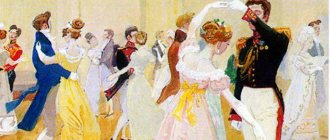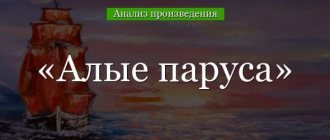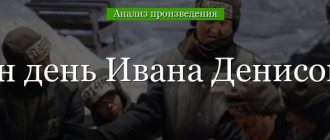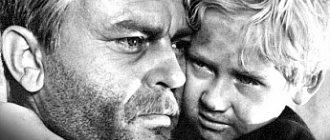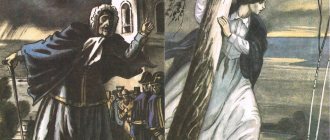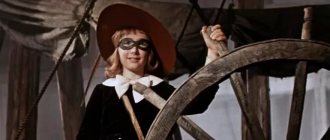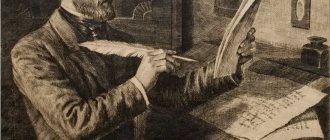In the history of Russian culture, the work of the artist Viktor Mikhailovich Vasnetsov is of great importance. The main themes of his work were folklore and Russian history. His versatility in skill, genre and performance technique contributed to the creation of such masterpieces as: “Alyonushka”, “Three Heroes”, “Ivan Tsarevich on the Gray Wolf”, “Snow Maiden”, etc. A special place among numerous creations should be given to the painting by V. Vasnetsov “After the massacre of Igor Svyatoslavich with the Polovtsy” (1880). We offer you the history of the painting, its description, reviews about it.
Purchase of the painting by Tretyakov
Vasnetsov had the opportunity to collaborate with major Russian philanthropists. One of them was Savva Ivanovich Mamontov. This major industrialist, sculptor, musician, and theater lover often gathered artists, actors, and writers in his house. They ordered several canvases from Viktor Mikhailovich.
After some time, Vasnetsov met philanthropist Pavel Mikhailovich Tretyakov. He purchased the painting “After the Battle of Igor Svyatoslavich with the Polovtsians” for his gallery. Many art fans are pleased with the masterpiece in the Tretyakov Gallery in Moscow in our time.
Mental confusion
It is believed that it was from this painting that Vasnetsov found his direction, in which he had no predecessors.
The negative attitude towards the painting “After the Massacre...” by the main “apologist” of realism Vladimir Stasov and some Itinerant artists led by Grigory Myasoedov, who opposed the exhibition of the painting, made Viktor Mikhailovich Vasnetsov feel spiritual confusion. It got to the point that, as a sign of protest, he filed an application to withdraw from the Partnership.
Fortunately, Vasnetsov, who was having a hard time with such an outright rejection of the picture and fierce disputes, was supported by other colleagues in the creative workshop, and he took his statement back. At least, it could not be found in the archives.
“I am incredibly happy for your reconciliation with the Partnership,” Vasily Maximov writes to him, “our slow-wittedness almost created a new way out, which was not expected by anyone, and especially by me.”
The plot of the painting “After the massacre of Igor Svyatoslavich with the Polovtsians”
The content of Vasnetsov’s painting shows the end of a terrible battle with the Polovtsian army. We see only dead warriors. The fierce battle took the lives of experienced fighters, as well as very young heroes. The enemy's arrows spared no one. The peculiarity of the canvas is that dead warriors do not cause much horror. The artist does not depict the real devastation after the battle. Dead defenders appear to be sleeping. There are no bloody bodies or severed body parts. With death, all conflicts were leveled, calmed down and resolved. Next to the Russian heroes lie the Polovtsian warriors, only in the background of the canvas. Weapons that no one needs are scattered everywhere. And some heroes still have it in their clenched hands.
Many critics argued for a long time after the appearance of Vasnetsov’s painting. Many believed that it was impossible to interpret a historical event in this way. It seemed unreal to them on the canvas; nothing spoke of the fury of the battle and the outcome. Usually, after a battle, the warriors’ bodies are badly wounded, their faces are distorted, their clothes are covered in blood and chopped into shreds. But Vasnetsov also had defenders. So, he was supported by the great master Repin. He saw a completely new direction in the painting, the first Russian painting in such a design.
The plot of Vasnetsov's painting
In an open field somewhere not far from the banks of Kayala lies the squad of Novgorod-Seversky Prince Igor Svyatoslavich, defeated by the Polovtsians. The picture in which death seems to triumph does not evoke horror in the face of the dead. On the contrary, it seems that the warriors are sleeping, but when the sun rises they will wake up and continue the battle. However, by the appearance of the dead Cumans, whose bodies are depicted more naturalistically, we understand that none of them will wake up again.
Vasnetsov was called “the hero of Russian painting”
The difference in the depiction of Russians and Polovtsians allows Vasnetsov to draw an allegory of the struggle between good and evil. However, in reality this dividing line was not so clear. In the long-term relationship between Ancient Rus' and the nomads, there were periods not only of war, but also of peace. For example, dynastic marriages took place: the son of the same Igor Svyatoslavich Vladimir was married to the daughter of the Polovtsian Khan Konchak. And this is far from a rare example.
Self-portrait, 1873. (wikimedia.org)
Igor Svyatoslavich himself, like the other princes who took part in the campaign, is not in the picture - they were captured. On the battlefield rest simple warriors who could have survived if Igor had not rushed with the campaign, but had joined forces with other Russian princes.
Vasnetsov does not set himself the task of depicting the battle or its consequences. He wants to show in what form these events remained in the people's memory, to convey the people's understanding of duty, beauty, and goodness. The events of the 12th century cease to be a historical chronicle, but become part of the process of myth-making and world understanding.
Features of the composition
What does the unusual composition of the painting “After the Massacre...” mean? We can immediately conclude that the warriors fought until their last breath. The climax of the picture is the hero lying in a foreshortened position with his arms outstretched. The artist showed him as powerful, beautiful, full of military valor. The viewer immediately imagines him alive, in the form of a mighty warrior in armor. It is clear from everything that the invincible hero did not die immediately, but fought with the enemy for a long time. There was no one left alive. Vasnetsov especially carefully developed the image of this experienced warrior.
Next to the mighty hero lies a handsome young warrior. His heart was pierced by an enemy arrow. In these two images, the artist shows that both experienced fighters and young ones stood up to defend the Fatherland. They gave their lives for the freedom of their native land.
In the background you can see another Russian warrior, in whose hands a bow remained clutched, from which he was about to shoot at the last moment. These heroes are filled with the majestic spirit of Russians who gave their lives for a great cause. In the background of the canvas you can see the slain bodies of the Polovtsians, who died a painful death. The artist did not pay much attention to the depiction of their bodies. One Polovtsy lies on his side, another is bent, the third fell on his back and threw his head back.
Option 3
Here you can see a large field on which soldiers who died in the war lie. Blood soaked the entire earth and this made it red.
Our Russian soldiers tried to defend their land and therefore fought their enemies to the last drop of blood. Only now both they and their enemies are lying on the ground, and the ground for which they fought is covered with the bodies of dead soldiers. And large birds fly over their heads in order to find something to eat. They are glad that they got the loot almost for nothing. Of course, the picture is not impressive, but on the contrary, it brings melancholy and gloom. A little above you can see the setting moon, which has almost disappeared below the horizon. Here you can compare the setting sun and the passing life of soldiers.
If you look at the very center of the picture, you can see two young men who gave their lives to save the Russian land.
One of the warriors turned his head directly towards the viewer and therefore we can see him very well. He has a helmet on his head, which covers his head and protects him from injury. And a large and long arrow sticks out of the chest, which pierced the heart and death came instantly. Next to him there are other wars who also did not spare their lives and death took them just as quickly. If you look at the face, there is not even any emotion there. The same cannot be said about the warriors who are a little further away. On the contrary, they are evil and they want to kill and kill, but they just killed them.
In addition, there are also red shades of color in the picture. They are found on the helmet, chest, boots or on the ground near the killed warriors. And small and very beautiful flowers bloom on the ground. This suggests that life ends forever for some, but for others it continues.
The nature around the fallen soldiers cries for them and regrets that everything turned out this way. Dark clouds are moving across the sky. And on the left side of the picture you can see a bird that has already eaten and drunk blood, and is now waiting for the rest of its relatives to arrive.
The soldiers accomplished what they had been striving for for so long. And they did everything to protect their homeland and prevent innocent people from dying. They showed themselves to be brave and powerful and proved to everyone that they are patriots of their Motherland.
I believe that every person should love their country. This is important for the existence of our Motherland.
Nature in the plot
Vasnetsov paid special attention to the depiction of nature in the painting. The viewer watches the fight between two eagles in the air. They symbolize the spirit of freedom. Another eagle sits on the left and adjusts its plumage with its beak. The menacing picture after the battle is complemented by approaching thunderclouds. The steppe is slowly closing under their shadow. A reddened, ominous moon is visible behind the clouds.
The final refuge of the warriors was the battlefield, decorated with wildflowers and green grass. The viewer feels that twilight is coming in the picture. It is also worth noting the warriors’ armor depicted by the artist, decorated with traditional ornaments.
“Battle of the Ice” in images and paintings
HELL. Kivshenko. “Prince Alexander wounds Earl Birger,” 1888. Well, what can you say? There is no living space in this picture from the point of view of historical realism. Not a single one! He had to be able to do that... And he also drew “The Council in Fili”...
Then Prince Alexander came out and with him many other Russians from Suzdal. They had countless bows and a lot of beautiful armor. Their banners were rich, their helmets radiated light. Elder Livonian Rhymed Chronicle
Art and history.
“Where is the Massacre? These were the requests from VO readers that came to me after the publication of material about the Battle of Kulikovo in images and paintings. And with “Carnage” it’s like this: there was a time when they were very reluctant to write it. Then, on the contrary, perhaps the lazy one didn’t write it. So it is simply physically impossible to analyze all the paintings in which it is depicted. But the topic is certainly very interesting, so it’s time to consider it too. But we will have to start... again with the newspaper Pravda, which on April 5, 1942, that is, just in time for the anniversary, published an article dedicated to this event. Another material, even with a picture, was published by the Moscow Bolshevik newspaper.
Editorial from Pravda for April 5, 1942. Note that the text makes no mention of the knights being drowned in the lake. And why? Yes, because this is not in the earliest and most reliable chronicle texts. So the Pravda journalists compiled “Pravda” material, which no historian, neither ours nor a foreign one, could find fault with, because Pravda always writes... the truth!
Article in the newspaper "Moscow Bolshevik". But no one in the Central Committee of the All-Union Communist Party (Bolsheviks) could stop the newspaper of the “Moscow Bolsheviks” from fantasizing, and its journalists “had a blast” to the fullest! And in the picture there are both armor and horns - in a word, a complete gentleman’s set of “chained knights”, who in the end, of course, drown!
By this time, Eisenstein’s film “Alexander Nevsky” was already showing everywhere on the screens of the USSR, which was first released, then, after August 23, 1939, removed from distribution and put on the shelf, but after June 22, 1941, it saw the light again, although and not immediately, but only after Stalin’s words that in the fight against the enemies of our Motherland we need to emulate our heroic ancestors.
N.K. Roerich. “Alexander strikes Earl Birger with a spear,” 1904. Actually, at first, Prince Alexander was even more often depicted, “putting a seal on Birger’s face with a spear.” So N. Roerich paid tribute to this plot and in his own decorative manner painted... a purely decorative picture. It’s interesting that Alexander is holding a spear with both hands, “in Sarmatian style,” which in 1240 had not been practiced for at least 500 years
His second painting, “Russian War,” is on the same theme, but painted in 1942, just as decorative and exotic.
Well, then pictures on this epic theme began to pour out like from a cornucopia. And it's clear why...
V. A. Serov painted two paintings. The first is the battle itself and the second: “The entry of Alexander Nevsky into Pskov after the Battle of the Ice.” It’s interesting that the latter somehow has a lot in common... with “Boyaryna Morozova”. And here we essentially have nothing to look for. The prince is there, there are captured Germans at the stirrup, the people are present and rejoicing... There is nothing to complain about here.
But where the battle is...
“The entry of Alexander Nevsky into Pskov after the Battle of the Ice” by V. A. Serov
"Battle on the Ice". V. A. Serov, 1942. This is where things get more interesting, of course. Let's not talk about faces and poses - they are “full of anger and determination,” as it should be. But this was probably the first time that an artist painted helmets... from a movie. Yes, look at the “wonderful man” in the center of the canvas, with a round shield and sword. On his head he has a “helmet” just like the one from the movie “Alexander Nevsky”. There is also a tophelm with horns lying around, well, what would it be like without them. And I just want to ask: in which branch of Mostorg, which sells hardware, did the author spot the ax that the guy in the sheepskin coat is holding in his hand, with which he is chopping a German in the snow? Well, after all, the Armory Chamber is in Moscow, the State Historical Museum is in Moscow, and the difference between combat axes and working axes that were in use in the 13th century was already known. But no, he didn’t bother with all this. The simpler the better!
That is, this is where it began, and then examples of blatant negligence, completely unworthy of national history, began to multiply and multiply and multiply. For example, the artist Dmitry Pavlovich Kostylev. And he graduated, and was a member of prestigious unions, and went to the open air in France... In a word, a master. He writes to himself: “Creativity for me is an attempt to find answers to the eternal questions of human existence... And an appeal to worthy and strong personalities of the past and present - such as St. Peter, Metropolitan of Moscow or Peter I, Emperor of Russia, and others, comes from the desire to use the examples of their lives to get somewhat closer to this goal...” Wonderful! And this is how it is solved in color...
The prince was discharged as needed. Eagle Prince (the figure on the left), needless to say. But what skill did the artist lack for his opponent? What kind of helmet is he wearing? Is it put on the head of a microcephalus, or not? But there is also hair, and a balaclava... And then there are horns in the shape of a lyre... Well, it is known that the knights of St. Mary of the Teutonics had the charter of the Templars and they were forbidden to decorate their weapons (and helmets as well), and even more so to attach the horns of the unclean to them! The Livonian Chronicle says: “brothers in rich helmets,” that is, gilded ones, because gilding symbolizes wealth and protects from rust. The shoulder... and the back are clearly armor. But what kind of armor in 1242? And, by the way, where does the arm go further from the shoulder, or was it cut off by the shield? There’s no hand, but he’s an artist! And when he draws naked girls, everything is in place
“Carnage” by V. M. Nazaruk. Here again, it’s just pure epicness. And in fact, the name “Great Flood” would be much more suitable for it!
“The Massacre” by S. N. Prisekin
Here we see a real riot of the author’s boundless imagination. Let's start from left to right and have a good laugh. First of all, an archer in a cuirass and burguignot helmet, that is, in armor somewhere in the mid-16th century. Here again there are a bunch of helmets from “Nevsky...”, and in plain sight there is a crossbowman turning the “Nuremberg crank”, which also had not yet been invented in 1242. Prince Alexander lost his helmet somewhere, but did not give up the fight, well, this happens, but something else makes me laugh: a man in an undershirt with a three-piece pitchfork. And the Germans are even more wonderful with halberds than the other. Apparently, they borrowed it from Swiss mercenaries after the Battle of Sempach. And even those were simpler then. And those here in the picture are from the 17th century, no less! Well, in the foreground, of course, who? A man in bast shoes! But bast shoes were the working shoes of peasants, and summer ones at that. On the issue of the history of the spread of bast shoes in Rus', there is a rich historiography and a whole range of opinions, often mutually opposed. It is also known that they wore their best during war in order to impress the enemy. So although there is no consensus on bast shoes, I would not draw a bast shoe in the foreground. What is this strange desire to stick out our modesty? For what? I would really like to put some goatskin supports on it. Did they do something like this back then? And the picture couldn’t have gotten any worse!
The painting by V.V. Matorin surprises others. A mass of infantry in white... And where are the horsemen? After all, it is said: the brothers went like pigs. But this is a cavalry formation. Or did the infantrymen of the order, dressed in chain mail, run so quickly that they found themselves on the line of combat contact at the same time as the horsemen?
The painting by A. I. Borisov was made in the best traditions of the worst socialist realism. All knights are in armor from the 16th century. and the infantry rushes forward, putting halberds forward
In the 90s, the artist Igor Dzys painted many battle paintings. And among his works there is “The Massacre”. And this work of his (see below) is an excellent example of what an artist can do, who, firstly, knows how to draw, and secondly, knows historical realities, that is, the material component of culture, the charters of knightly orders, and most importantly - understands the difference between individual and mass. And on this canvas of his there is both the individual and the mass, both corresponding to the era and capable of corresponding - in a word, this is, perhaps, the only work that can be set as an example for other artists.
Painting by I. Dzysya
But the artist E. Emelyanov worked on his large-scale canvas for almost 10 years. And this resulted in a huge diorama, which he exhibited at the Artillery Museum in St. Petersburg. And everything seems to be fine: the order’s flag with three braids, and the knights seem to be from the Osprey edition, recognizable, but... still the ice breaks, the knights drown - and where? In a lake where sparrows are knee-deep! In 10 years it would be possible to find the answer to this “sore question” of our time...
Work by D. Gordeev
If you look at his blog, the warriors look very good individually. But in the picture we see that both the knights and our warriors are using spears completely incorrectly. This is what they used on the Bayeux Tapestry. But then the dominant technique became cushing the spear (that is, when it is pinched under the armpit!), since the spears themselves became longer! And for some reason they all belong to the Order of the Dobrzyn Brothers. Perhaps this shows their battle with Daniil of Galicia, who defeated them in 1237? Because on Lake Peipus the knights wore black crosses. Well, why did the knight in the horned helmet bow his head like that? So that you can’t see anything through the crack of the helmet? That is, it is not enough to know who was dressed at that time. You also need to have an idea of tactics and not mix cavalry with infantry in the front ranks!
And here is the creation of A. Ezhov (2009)
By this time, as they say, well, everything has become known, everything is there, the Internet is working - take it and write. Or... copy it. But no! Let's look at “this” carefully. God be with him, with the knight who crawls out of the hole. But look how Prince Alexander, being on horseback somewhat behind the German knight in the center, nevertheless manages to hit him in the chest with a spear! Well, it doesn’t happen like that and there was no need to draw like that! And once I drew it, I saw that I was mistaken, so it was possible and necessary to redraw it, and not make people laugh who look at such “revelations” of our “artists”!
But this is the metro in St. Petersburg. Mosaic “Battle on the Ice” at the Alexander Nevsky Square metro station. And for a mosaic panel it’s very good. It’s not clear why the order’s cross is red and not black, and how the horseman swings a sword at his opponent with both hands, but otherwise... nothing at all. Well, why does a German need horns? Tea, not a cow...
The idea of creating a canvas
Living in St. Petersburg, Vasnetsov was interested in the genre of folk legends. This inspired him to create the masterpiece described. To create the plot of the monumental canvas, he took authentic events. It traces the traditions of Russian folk epic. The artist depicted the glorious feat of Russian soldiers based on “The Tale of Igor’s Campaign.” His idea is to show the battle, glorified by the people and chroniclers, so that descendants will preserve the memory of the majestic images of the defenders of their native land.
Reviews about the film
Today the painting by the Great Master Vasnetsov is a national treasure, stored in the State Tretyakov Gallery. Often high school students come here after studying “The Tale of Igor’s Campaign.” And then they are asked to write an essay “After the massacre of Igor Svyatoslavich with the Polovtsians” based on the plot of the film. Reviews about the canvas are quite positive, because it depicts the most important events of Russian history. Vasnetsov glorified the brave Russian heroes and commemorated their feat. The height of the painting is 2 m and the width is 4 m. Many note the special patriotism of the painting.
Other paintings by Vasnetsov dedicated to the distant past
Viktor Mikhailovich is also called the “hero” of Russian folk painting. He fully revealed the direction of Russian history and folklore. The artist carefully drew every detail. Many of Vasnetsov’s works evoke a special patriotic spirit in viewers: “Bogatyrs”, “Heroic Gallop”, “Nestor the Chronicler”. For some time the artist was engaged in painting churches. The paintings are devoted to religious themes: “The Virgin and Child,” “Christ Pantocrator,” “God of Hosts.” Many of Vasnetsov’s subjects were made using special artistic techniques, inherent only to the great master of the brush.
Tretyakov bought the painting
Vladimir Stasov reproached “After the Massacre...” for academicism, and its creator for being carried away by conventions.
Naturally, Vasnetsov did not remain in debt, quipping that “artistic truth for Stasov is certainly one-sided and, excuse me, without pants.” No matter how Viktor Mikhailovich hid his feelings, he was very upset by such a cold reception of the work into which he had invested a lot of effort. The newspapers published reviews, one more devastating than the other, where the artist was accused of “glorifying corpses” and that he did not write the battle itself!
The insightful Ivan Kramskoy, whose opinion was listened to by absolutely everyone, immediately appreciated Vasnetsov’s unusual creation and even foresaw its future significance for Russian culture: “... it is difficult for Vasnetsov to break through the bark of the routine of artistic tastes. His picture will not soon be understood. Sometimes you like it, sometimes you don’t, but meanwhile it’s an amazing thing.”
But Pavel Mikhailovich Tretyakov, who never took into account the opinions of critics and relied only on his own instincts, immediately purchased “After the Massacre...” for 5 thousand rubles. This painting is now one of the main treasures of the “Vasnetsov” hall in the Tretyakov Gallery.
